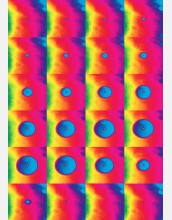|

Press Release 05-030
A Bubble Full of Sunshine

Temperatures inside bursting bubbles can be four times hotter than the Sun
March 3, 2005
Chemists at the University of Illinois have determined that temperatures inside gas bubbles collapsing in a liquid reach roughly 20,000 degrees Kelvin—four times hotter than the surface of the Sun. They made the discovery by blasting the liquid with intense sound waves and measuring "sonoluminescence," the light emitted from the bubbles as they form and collapse. According to the researchers, it is the first time anyone has measured the temperature inside a single collapsing bubble.
Their work was supported by the National Science Foundation and the Defense Advanced Research Projects Agency, and published in the March 3, 2005, issue of the journal Nature.
For further information, see the University of Illinois news release.
-NSF-

Media Contacts
M. Mitchell Waldrop, NSF (703) 292-8070 mwaldrop@nsf.gov
James E. Kloeppel, University of Illinois, Urbana-Champaign 217-244-1073 kloeppel@uiuc.edu
Principal Investigators
Kenneth Suslick, University of Illinois, Urbana-Champaign (217) 333-2794 ksuslick@uiuc.edu
Related Websites
The Kenneth Suslick Laboratory at UIUC: http://www.scs.uiuc.edu/suslick/index.html
Earlier NSF press release about the Illinois work: http://www.nsf.gov/od/lpa/news/02/pr0263.htm

The National Science Foundation (NSF) is an independent federal agency that
supports fundamental research and education across all fields of science and
engineering, with an annual budget of $6.06 billion. NSF funds reach all 50
states through grants to over 1,900 universities and institutions. Each year,
NSF receives about 45,000 competitive requests for funding, and makes over
11,500 new funding awards. NSF also awards over $400 million in
professional and service contracts yearly.
 Get News Updates by Email Get News Updates by Email
Useful NSF Web Sites:
NSF Home Page: http://www.nsf.gov
NSF News: http://www.nsf.gov/news/
For the News Media: http://www.nsf.gov/news/newsroom.jsp
Science and Engineering Statistics: http://www.nsf.gov/statistics/
Awards Searches: http://www.nsf.gov/awardsearch/
| 


